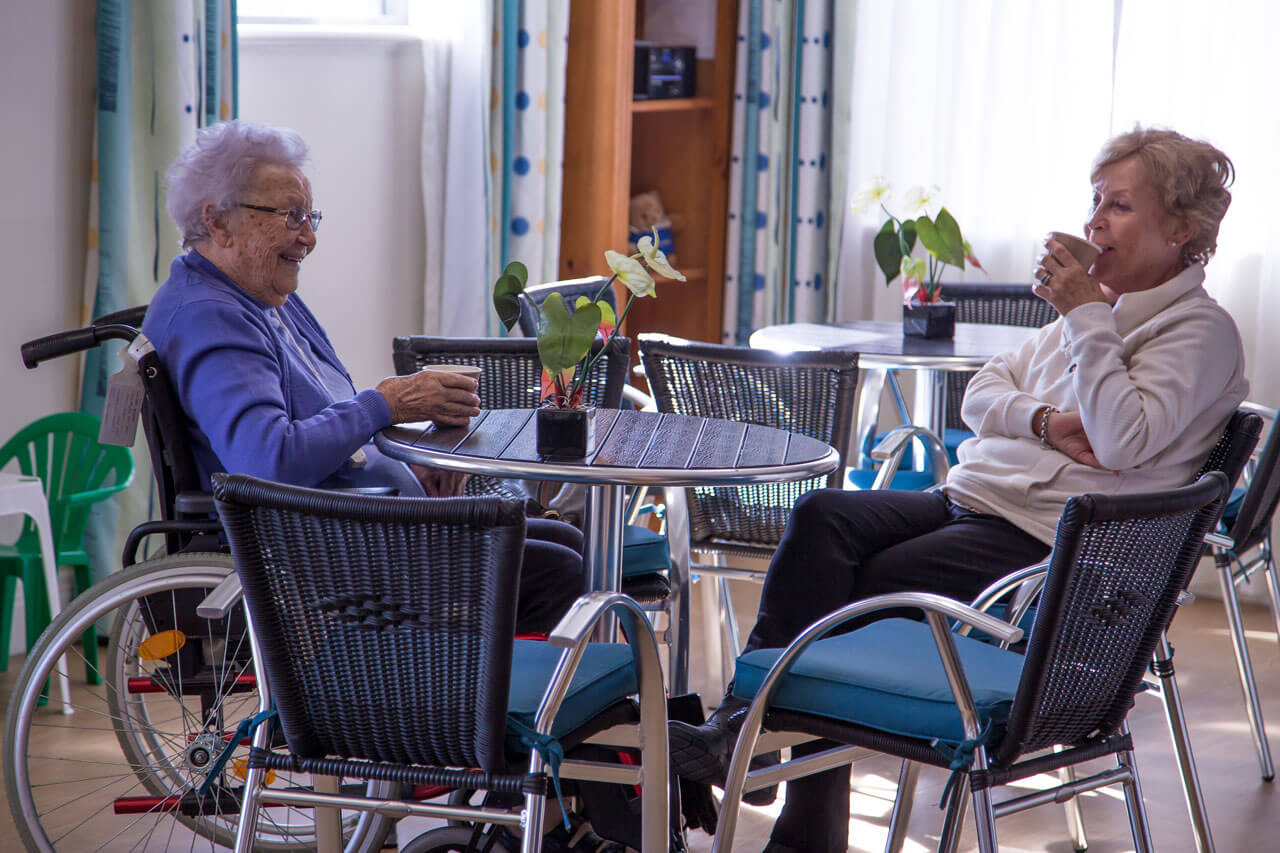So, you’ve probably heard the term "aged care" floating around, especially if you’ve got aging loved ones or are planning ahead for your own future. But what exactly does it mean? Aged care isn’t just about providing a roof over someone’s head when they can’t live independently anymore—it’s a comprehensive system designed to ensure seniors live comfortably, safely, and with dignity. Whether it’s home-based care, residential facilities, or specialized medical attention, this field has become more crucial than ever as populations age worldwide.
Let’s be real here—if you’re reading this, chances are you’re either looking into aged care options for yourself or someone close to you. It’s not an easy decision, but it’s one that requires careful thought and planning. From understanding the different types of services available to figuring out how to pay for them, there’s a lot to unpack. That’s why we’re breaking it all down for you in this ultimate guide.
Think of this article as your go-to resource for everything related to aged care. We’ll dive deep into the nitty-gritty details so you don’t have to scour the internet piecing things together. By the time you finish reading, you’ll feel confident making informed decisions about senior living solutions. Sound good? Let’s get started!
Read also:Fox News Admits Trump Economic Chaos The Untold Story
What Exactly Is Aged Care?
Aged care refers to a wide range of services tailored specifically to meet the needs of older adults who may require assistance with daily activities, healthcare, or social interaction. In simpler terms, it’s all about helping seniors maintain their quality of life as they age. The goal is to provide personalized care that addresses physical, emotional, and mental well-being while respecting individual preferences and independence.
It’s important to note that aged care isn’t a one-size-fits-all solution. Depending on factors like health conditions, mobility, and personal circumstances, the level of care needed can vary significantly. For instance, some seniors might only need occasional help with household chores, while others might require round-the-clock medical supervision. Understanding these differences is key to finding the right fit.
Breaking Down the Basics
- Aged care includes both in-home and facility-based options.
- Services range from basic assistance with daily tasks to advanced medical care.
- It emphasizes promoting independence and dignity among seniors.
Now, let’s talk numbers. According to recent statistics from the World Health Organization (WHO), the global population of people aged 60 and above is expected to double by 2050. This growing demographic highlights the increasing demand for effective and accessible aged care systems. So yeah, it’s not just a local issue—it’s a worldwide concern!
Types of Aged Care Services
When it comes to aged care, variety is the name of the game. There’s no shortage of options when it comes to how seniors can receive the support they need. Here’s a quick rundown of the most common types:
In-Home Care
For those who prefer to stay in the comfort of their own homes, in-home care offers a flexible and personalized approach. Caregivers visit regularly to assist with tasks like meal preparation, medication management, and personal hygiene. This option allows seniors to retain their independence while still getting the help they need.
Fun fact: Studies show that seniors who receive in-home care tend to experience better mental health outcomes compared to those in institutional settings. Who wouldn’t want to stay in familiar surroundings surrounded by cherished memories?
Read also:Democrats Cybertruck Tweet Shift A Gamechanger In Political Messaging
Residential Aged Care Facilities
Also known as nursing homes or retirement villages, residential aged care facilities provide a structured environment where seniors can access 24/7 support. These places often offer a range of amenities, including communal dining areas, recreational activities, and on-site medical staff.
While some people might shy away from the idea of moving into a facility, modern residential care homes are far removed from the old-school stereotypes. Many prioritize creating a warm, welcoming atmosphere that feels more like home than a hospital.
Palliative Care
When someone is dealing with a terminal illness, palliative care steps in to focus on comfort and quality of life. This specialized form of aged care involves managing pain and other distressing symptoms while providing emotional and spiritual support to both the patient and their family.
Here’s a stat for you: Research indicates that early access to palliative care can actually improve survival rates in certain cases. That’s pretty powerful stuff!
How Much Does Aged Care Cost?
Let’s face it—money talks. One of the biggest concerns people have about aged care is the cost. And honestly, it’s a valid worry. The expenses associated with aged care can vary wildly depending on the type of service, location, and individual needs.
In general, in-home care tends to be more affordable compared to residential facilities. However, it’s essential to factor in additional costs such as equipment rentals or specialized therapies. On the flip side, residential care often comes with a higher price tag due to the round-the-clock staffing and comprehensive services provided.
Funding Options
The good news is that there are several funding options available to help ease the financial burden. Governments in many countries offer subsidies, grants, and tax incentives to make aged care more accessible. Additionally, private insurance plans can cover certain aspects of care depending on the policy details.
- Government subsidies for low-income seniors
- Private insurance coverage for specific services
- Community-based programs offering free or reduced-cost care
Pro tip: Always read the fine print before committing to any funding arrangement. Understanding exactly what’s covered—and what’s not—can save you a headache down the road.
Choosing the Right Aged Care Provider
With so many providers out there, selecting the perfect match for your needs can feel overwhelming. But fear not! There are a few key factors to consider that’ll make the process smoother.
Reputation Matters
Do your homework and research the reputation of potential providers. Look for reviews, testimonials, and ratings from past clients. Word-of-mouth recommendations from friends or family members who’ve had positive experiences can also be invaluable.
Also, don’t underestimate the importance of visiting facilities in person. A tour will give you a firsthand look at the environment, staff interactions, and overall vibe. Trust your gut—if something feels off, it probably is.
Accreditation and Certifications
Make sure the provider you choose is properly accredited and meets industry standards. Accreditation ensures that the facility adheres to strict guidelines regarding safety, quality of care, and staff qualifications.
Remember, credentials matter. You wouldn’t trust just anyone to take care of your loved ones, right? So why settle for anything less than the best?
Common Challenges in Aged Care
Despite its many benefits, the aged care system isn’t without its challenges. Issues like staffing shortages, funding constraints, and inconsistent regulations can create hurdles for both providers and recipients of care.
One major concern is the growing demand for caregivers. As the population ages, the need for skilled professionals in the field continues to rise. Unfortunately, this demand often outpaces the supply, leading to longer wait times and reduced service quality in some areas.
Potential Solutions
- Investing in training programs to attract more workers to the aged care sector
- Implementing technology-driven solutions to enhance efficiency and communication
- Promoting public awareness campaigns to combat negative stereotypes about aged care
Change won’t happen overnight, but small steps taken today can lead to big improvements tomorrow. It’s all about working together to build a brighter future for our aging population.
Advancements in Aged Care Technology
Technology has revolutionized nearly every aspect of modern life, and aged care is no exception. Innovations in digital tools and devices are transforming the way seniors receive care and interact with their surroundings.
Take wearable health monitors, for example. These nifty gadgets allow caregivers to track vital signs remotely, ensuring quick responses to any potential issues. Then there’s virtual reality therapy, which helps reduce stress and anxiety by immersing users in calming environments.
Embracing the Future
As technology continues to evolve, the possibilities for enhancing aged care seem endless. Imagine a world where robots assist with routine tasks, freeing up human caregivers to focus on more meaningful interactions. Or how about AI-powered platforms that predict and prevent health crises before they even occur?
While these advancements sound futuristic, they’re closer to reality than you might think. By embracing innovation, we can create a more efficient, compassionate, and sustainable aged care system for everyone.
The Importance of Emotional Well-Being
Physical health is obviously important, but let’s not forget about the emotional side of aged care. Loneliness and isolation are significant concerns for many seniors, and addressing these issues is crucial for maintaining overall well-being.
Social engagement plays a vital role in keeping spirits high. Activities like group exercise classes, art workshops, and book clubs provide opportunities for seniors to connect with others and stay mentally stimulated. Plus, having regular visits from loved ones or volunteers can make a world of difference.
Building Stronger Connections
Technology can also play a part in fostering emotional connections. Video calls, social media, and messaging apps make it easier than ever for seniors to stay in touch with family and friends who live far away. Encouraging intergenerational relationships within communities can further strengthen these bonds.
At the end of the day, it’s all about creating a sense of belonging and purpose. When seniors feel valued and connected, they’re more likely to thrive in every aspect of life.
Final Thoughts and Next Steps
There you have it—your crash course on aged care. From understanding the basics to exploring cutting-edge technologies, we’ve covered a lot of ground together. Remember, choosing the right aged care solution is a deeply personal decision that depends on individual needs and circumstances.
So, what’s next? Take some time to reflect on what you’ve learned and start researching options that align with your goals. Don’t hesitate to reach out to professionals or support groups for guidance along the way. And most importantly, keep communication open with your loved ones to ensure everyone’s voices are heard.
Before you go, we’d love to hear your thoughts. Drop a comment below sharing your experiences or questions about aged care. Sharing knowledge and insights benefits us all. And hey, if this article helped you, feel free to share it with others who might find it useful. Together, let’s create a brighter future for our aging population!
Table of Contents
- What Exactly Is Aged Care?
- Types of Aged Care Services
- How Much Does Aged Care Cost?
- Choosing the Right Aged Care Provider
- Common Challenges in Aged Care
- Advancements in Aged Care Technology
- The Importance of Emotional Well-Being
- Final Thoughts and Next Steps


